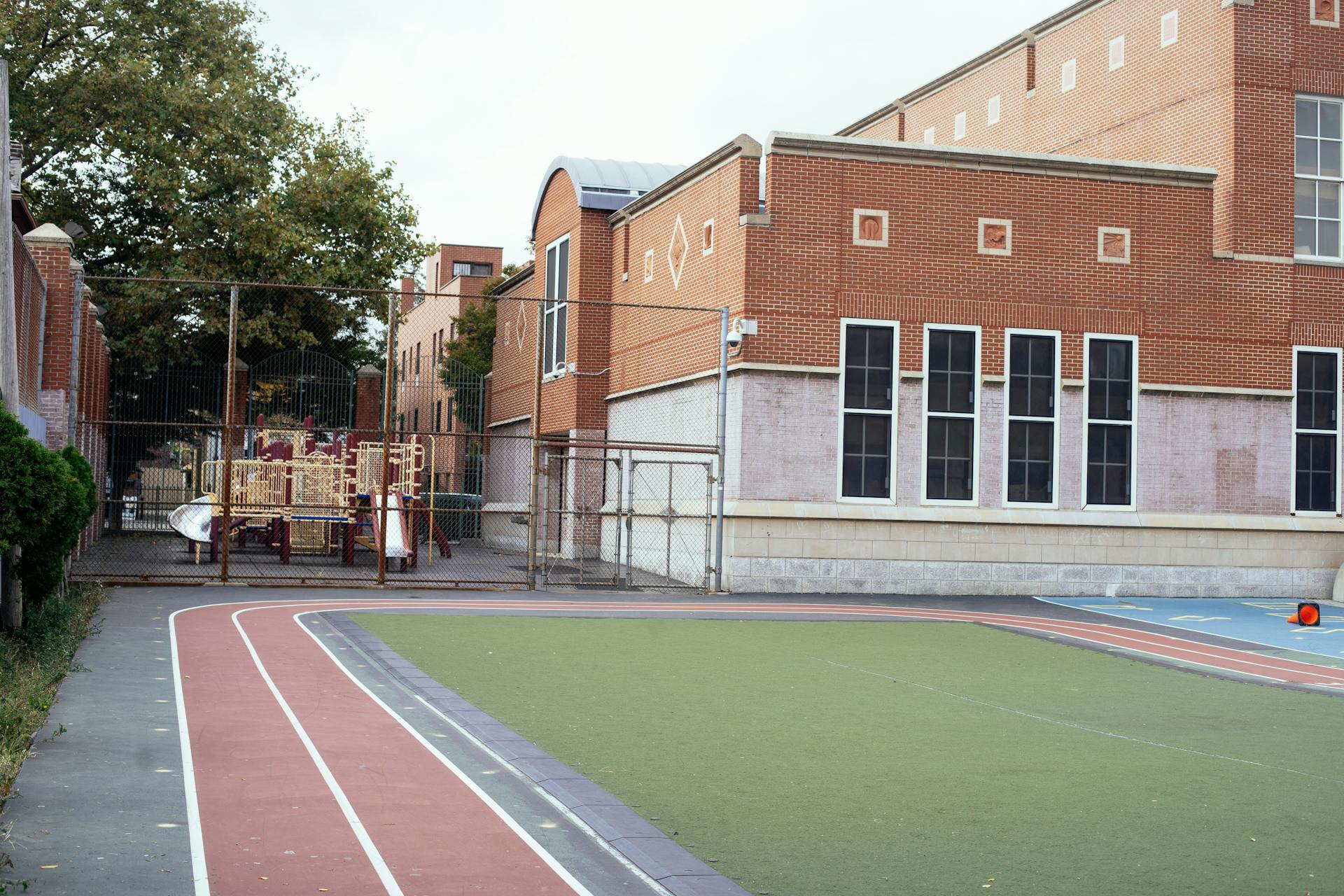The average age of a main instructional school building in the United States is 49 years, according to a survey by the National Center for Education Statistics (NCES).
About 38% of schools were built before 1970. Roughly half of the schools surveyed have undergone a major building renovation or addition. Of those that have been renovated, the average age of the renovation was 14 years.
Major repair, renovation, or modernization work was being performed in 21% of all public schools surveyed as of December 2023. Indoor air quality is a major focus for many schools, with 39% having an indoor air quality coordinator on campus. This position is responsible for monitoring air quality conditions at the school and reporting air quality issues and complaints.
Some 60% of schools have designated vehicle loading and unloading areas at least 25 feet from all building air intakes, including doors and windows. Eighteen % of schools have an anti-idling program that includes signage and active monitoring during pick-up and drop-off times.
Some 31% of public schools have one or more non-permanent (portable) buildings in use.
Here are other findings from the NCES public school building survey:
The average age of the main instructional building is 49 years old. The following %ages of reporting public schools’ main instructional buildings were built during the following time periods:
- Pre-1970: 38%
- 1970 – 1999: 21%
- 2000 – present: 20%
Nearly all public schools (93%) reported having some kind of athletic amenities on-site. The most commonly reported types of facilities were:
- A gymnasium (69%)
- All-purpose grass field (68%)
- Outdoor basketball court (56%)
- Baseball/softball field (38%)
- Weight room (29%)
- Outdoor track (28%)
Most public schools have dedicated library space available (89%).
Compared to the national estimate (89%), higher percentages of public schools with the following characteristics reported having dedicated library space available:
- With 500-999 students (96%)
- With a student body made up of 0-25% students of color (96%)
- In rural areas (94%)
- With 300-499 students (93%)
- Elementary schools (93%)
- In low-poverty neighborhoods (92%)
Compared to the national estimate (89%), lower percentages of public schools with the following characteristics reported having dedicated library space available:
- In cities (84%)
- In high-poverty neighborhoods (81%)
- With a student body made up of 76% or more students of color (80%)
- High/secondary schools (80%)
- With 0-299 students (77%)
Related Stories
| Jun 5, 2013
USGBC: Free LEED certification for projects in new markets
In an effort to accelerate sustainable development around the world, the U.S. Green Building Council is offering free LEED certification to the first projects to certify in the 112 countries where LEED has yet to take root.
| Jun 3, 2013
Construction spending inches upward in April
The U.S. Census Bureau of the Department of Commerce announced today that construction spending during April 2013 was estimated at a seasonally adjusted annual rate of $860.8 billion, 0.4 percent above the revised March estimate of $857.7 billion.
| May 21, 2013
7 tile trends for 2013: Touch-sensitive glazes, metallic tones among top styles
Tile of Spain consultant and ceramic tile expert Ryan Fasan presented his "What's Trending in Tile" roundup at the Coverings 2013 show in Atlanta earlier this month. Here's an overview of Fasan's emerging tile trends for 2013.
| May 20, 2013
Jones Lang LaSalle: All U.S. real estate sectors to post gains in 2013—even retail
With healthier job growth numbers and construction volumes at near-historic lows, real estate experts at Jones Lang LaSalle see a rosy year for U.S. commercial construction.
| Apr 30, 2013
Tips for designing with fire rated glass - AIA/CES course
Kate Steel of Steel Consulting Services offers tips and advice for choosing the correct code-compliant glazing product for every fire-rated application. This BD+C University class is worth 1.0 AIA LU/HSW.
| Apr 25, 2013
Colorado State University, DLR Group team to study 12 high-performance schools
DLR Group and the Institute for the Built Environment at Colorado State University have collaborated on a research project to evaluate the effect of green school design on occupants and long-term building performance.
| Apr 24, 2013
North Carolina bill would ban green rating systems that put state lumber industry at disadvantage
North Carolina lawmakers have introduced state legislation that would restrict the use of national green building rating programs, including LEED, on public projects.
| Apr 24, 2013
Los Angeles may add cool roofs to its building code
Los Angeles Mayor Antonio Villaraigosa wants cool roofs added to the city’s building code. He is also asking the Department of Water and Power (LADWP) to create incentives that make it financially attractive for homeowners to install cool roofs.
| Apr 22, 2013
Top 10 green building projects for 2013 [slideshow]
The AIA's Committee on the Environment selected its top ten examples of sustainable architecture and green design solutions that protect and enhance the environment.
| Apr 15, 2013
Seattle school certified as world's fourth Living Building
Bertschi School, an independent elementary school in the Capitol Hill neighborhood of Seattle, Wash., is now home to the first Living Building on the West Coast and the world’s fourth fully-certified Living Building.

















